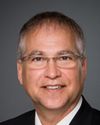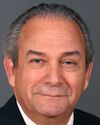Ladies and gentlemen, we're going to begin our meeting this morning, so I will ask that cameras be turned off and that people take their seats as appropriate.
I want to remind members that the meeting this morning is being held in public and will be televised.
As most members have noticed, we have changed to a larger room. That was at the request of a number of individuals, so we are in this room. I hope that everybody who needs to be here has found this new room. I suspect they all have.
Ladies and gentlemen, pursuant to Standing Order 108(3)(a), matters relating to the decisions of Elections Canada to allow veiled individuals to vote is the subject of today's meeting.
I would like to start the meeting by thanking Monsieur Mayrand and his team for appearing before the committee today on such short notice. We certainly appreciate that. We note that you have been doing that sort of thing for us for some time. We definitely appreciate that. We all appreciate that it has been a very busy week for Monsieur Mayrand, and we are pleased that you are able to accommodate us here today outside your busy schedule.
Committee members, I would also like to say that at our last meeting the decorum around the table was unacceptable. I will not entertain today personal attacks or rude comments by anyone. We are here for a very specific purpose, and I would request that we act accordingly.
By way of background and in an effort to ensure that the record is crystal clear on this point, I remind members present that on Monday, September 10, this committee, the Standing Committee on Procedure and House Affairs, passed unanimously a motion to have Monsieur Mayrand and his team with us today in his role as Chief Electoral Officer with Elections Canada to respond to concerns expressed by all members of this committee regarding Monsieur Mayrand's recent decision on the issue of veiled voting, as it is an urgent matter, and also to respect the time our clerk and analysts will need to prepare certain documentation, certainly with respect to the pending Quebec by-elections.
Monsieur Mayrand, after your opening statement the committee members will take turns asking a number of questions, following the typical fashion of this committee. We will follow the usual format of rounds of questions.
At this time, you are scheduled before this committee for a one-hour period. In view of the rather short period of time that you are testifying before this committee, I would ask, Monsieur Mayrand, that you restrict any opening remarks that you might have to not more than five or six minutes.
As well, members, I would ask that you ensure that your questions are on the topic for which we have requested Monsieur Mayrand's attention, that being the issue of veiled voting.
I would also remind the members that Monsieur Mayrand will need to be afforded an opportunity to answer your questions and ask that you ensure that your questions are simply not repetitive or too lengthy in their introductions, so that in fact there is time for Monsieur Mayrand to properly answer the question.
Before we begin our first round of questioning, I also wish to take this opportunity to make it clear at the outset that I will not entertain questions that do not deal specifically with the item of veiled voting. I am providing all members with advance warning that I shall direct the witness not to answer any questions on any other topic. Our mandate for this witness is very clear and was very clearly understood when the motion compelling Monsieur Mayrand's attendance was unanimously passed by this committee.
As I look at my colleagues around the room, I trust that every member of this committee before us understands and is in agreement with these ground rules. Please understand that I take my responsibility as chair very seriously, and I adhere to our time restrictions as closely as possible. I fully intend to respect the edict of the current Speaker of the House, wherein Mr. Speaker Milliken, when commenting on the role of committee chairs and members, stated the following:
I am confident that committee Chairs continue to be mindful of their responsibilities to make fair and balanced rulings based on the democratic traditions of this honourable place. Members of committees must also strive to resolve procedural issues in a manner which ensures that the rules are followed and that committee deliberations are balanced and productive for those committees.
Having said all of that, I would welcome Monsieur Mayrand to commence with his opening statement.


